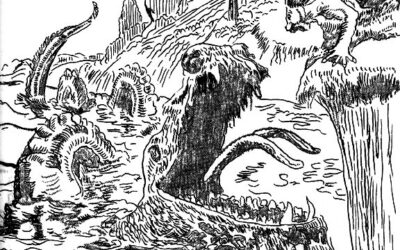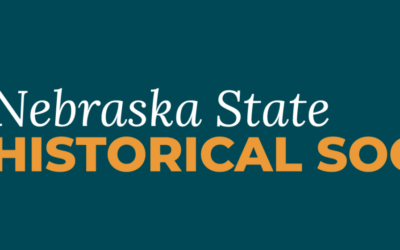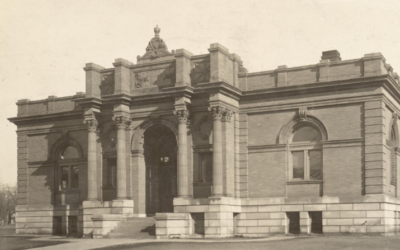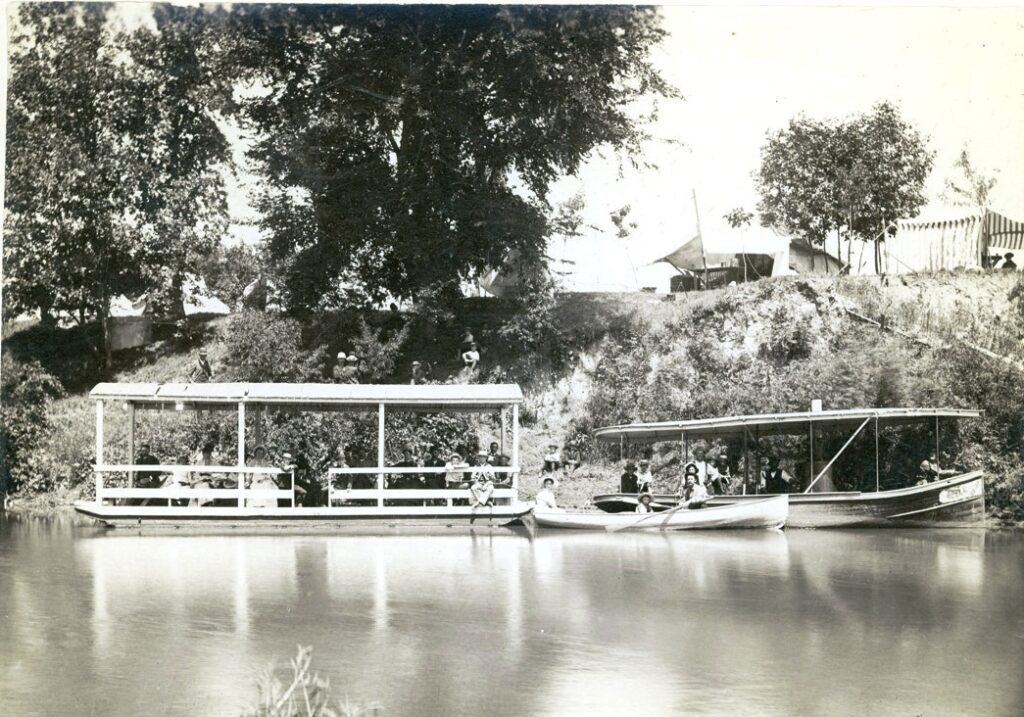
Chautauqua grounds near Big Blue River at Crete, ca. 1885. NSHS RG2491.PH2-91
Nebraska was a leader in the Chautauqua movement, which brought culture and entertainment to rural America. Thousands of Nebraskans spent as many as ten days each summer attending Chautauqua sessions at Crete, among other locations. The Crete Chautauqua for a time was the largest such assembly in the country. During the 1884-85 season, a pavilion capable of accommodating 800 to 1,000 people, a regular hall, an open-air auditorium, an eight-room dormitory, and a dining hall were erected at the assembly site of 109 acres along the Big Blue River. Within a decade twenty buildings had been erected.
The Omaha Daily Bee of June 15, 1886, included information on that year’s Crete Chautauqua assembly, scheduled for July 1-10. The program was publicized as a “series of brilliant lectures by speakers of national renown, of delightful concerts, chorus rehearsals, stereopticon exhibitions and elocutionary recitals, interspersed with brilliant fireworks and the delightful camp-fire.” Speakers included the Rev. Lyman Abbott of New York, who lectured on “The Industrial Revolution”; Senator John A. Logan of Illinois, commander-in-chief of the Grand Army of the Republic; Charles E. Bolton, whose travel lectures were illustrated by stereopticon slides; and author Mrs. G. R. Alden, who used the literary pseudonym “Pansy.” Training classes for Sunday School workers were also a part of the Chautauqua program, with concerts and fireworks added for variety.

Chautauqua grounds at Crete. NSHS RG2491.PH2-90
One of the intangible benefits of attending the Crete Chautauqua was the camaraderie engendered by joining hundreds of others in an outdoor setting in which many chose to camp in tents on the assembly grounds during the sessions. The Bee on June 29 advised those who wished to stay overnight that tents, bedding, towels, and camp furniture could be rented from the superintendent of the grounds. Food was available at the dining hall or at a lunch counter, “where edibles will be sold in large or small quantities at reasonable rates for the accommodation of those who desire to board in their tents.”
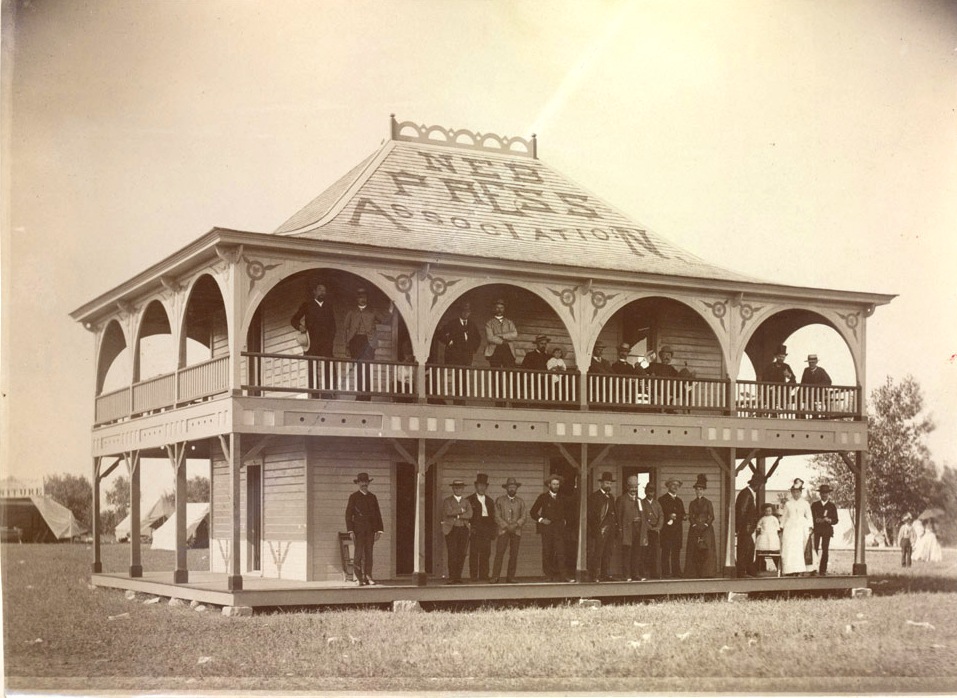
Editors’ Day at the Crete Chautauqua grounds, July 6, 1888. NSHS RG0802.PH68-21
Financial losses caused backers to dissolve the Crete Assembly after the 1897 season due to the emergence of competing assemblies in Lincoln, Beatrice, and Long Pine. For more information, see “Respectable Leisure: The Crete Chautauqua, 1882-1897,” by James P. Eckman in Nebraska History (Spring 1988).
– Patricia C. Gaster, Assistant Editor/Publications

